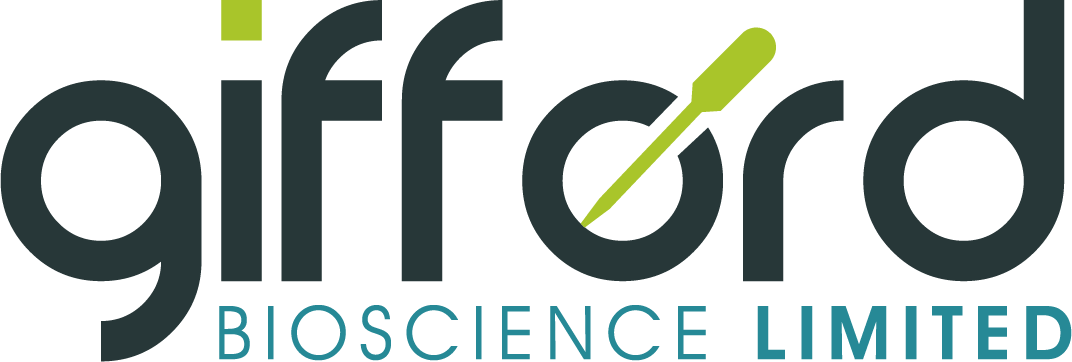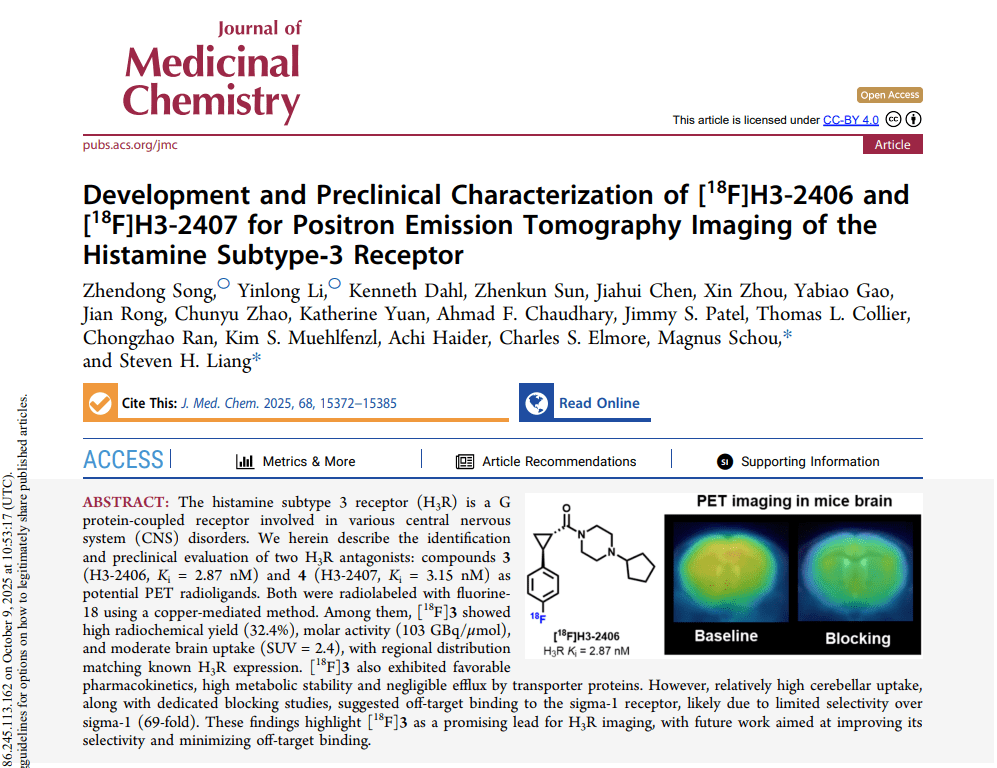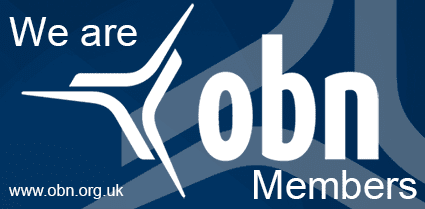We contribute our expertise to our customer’s research characterizing H3R tracers. Read the case study:
Case study: Preclinical Characterisation of H3R PET tracers.
Client result: Two viable [¹⁸F] leads progressed, with a clear plan for selectivity and occupancy work.
Development of H3R tracers is notoriously difficult. The team’s chemistry delivered candidates with the right profile to move forward. As reported in Journal of Medicinal Chemistry, our customer’s work identified and characterised [¹⁸F]H3-2406 and [¹⁸F]H3-2407 as potential PET ligands, with binding data and in vivo readouts supporting target engagement and informing next steps.
How Gifford Helped
We designed and ran H3R radioligand binding in endogenous-relevant systems, using a competitive format to generate Ki, rank selectivity, and advise on controls and protein conditions so the readouts mapped to the biological question. This binding screen narrowed the series, highlighted an off-target risk to refine, and set the next experiment.
What Stood Out
• Two leads emerged: H3-2406 and H3-2407 with Ki ~ 2.87 nM and 3.15 nM.
• [¹⁸F]H3-2406 showed strong radiosynthesis metrics (RCY 32.4%, molar activity 103 GBq/µmol) and moderate brain uptake (SUV ≈ 2.4) with distribution matching H3R.
• Blocking with multiple H3R antagonists reduced signal in H3R-rich regions, supporting target engagement; residual signal suggests sigma-1 off-target component to refine next.
Why It Matters
For CNS drug discovery, [¹⁸F]H3-2406 provides a workable lead for H3R PET with clear next steps on selectivity. The paper lays out a route to occupancy studies while flagging sigma-1 as the key optimisation lever.
Working with Gifford Bioscience
You work directly with our Principal Investigators and PhD scientists. We design, run, and interpret radioligand binding in complementary endogenous-tissue so you get decision-grade SAR, figures, and review-ready reports.
If you are evaluating GPCR ligands or PET tracer candidates, speak to a scientist.
Read the publication paper here.


